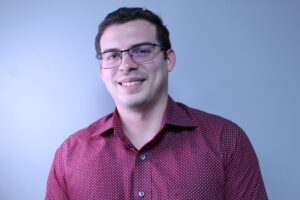
Cristopher Robles is a consultant and trainer at Conzultek in Costa Rica, specializing in Microsoft and Citrix and managing a team of four IT professionals. Despite his company being primarily a Microsoft shop, he had always been intrigued by Linux and wanted to learn about how it can be used to accomplish some of the same tasks he used proprietary software for. Cristopher opted to enroll in Linux FOundation Training & Certification’s Essentials of Linux System Administration (LFS201) training course, and to pursue the Linux Foundation Certified System Administrator (LFCS) exam. He then progressed onto the Linux Foundation Certified Engineer (LFCE) exam, which he passed last month. We spoke to Cristopher to learn more about his experience.
Linux Foundation: What is your current occupation?
Cristopher Robles: I’m a consultant and trainer in Microsoft and Citrix, and am also a Team Leader of the Infrastructure Team at a Costa Rican company named Conzultek.
LF: What was your position before completing your training and/or certification?
CR: Support Engineer, also at Conzultek Costa Rica, though the LF certification was not the principal reason of position change
LF: What prompted you to want to learn about Linux when you are working mostly with Microsoft technologies?
CR: I have always felt excited about GNU/Linux technologies, and I like to see this world from another point of view. For example, if we are talking about DNS services, in Microsoft Windows for Server DNS everybody uses a GUI console, but now when you are using Azure DNS Services, when importing DNS zones files, you have to use a RFC1035 file compliant, just like BIND9 in Linux based operating systems.
LF: How does the knowledge you gained with the training courses help you with your role?
CR: I have expanded my toolkit and procedures when implementing and troubleshooting. I’m now not limited to using only tools for Windows. Additionally, a lot of companies use Linux so we have to practice, learn, and be prepared.
LF: How long did it take you to prepare for the certification?
CR: It took me about 2 years, I took the exam 4 times, however, I finally did it!
LF: What resources did you use to prepare for the exam?
CR: I used the official course and I completed the official labs. A lot of research and I did my own labs with a Raspberry Pi and virtual machines.
LF: How do the LFCS and LFCE certifications help you be better in your role?
CR: The certifications in question don’t help me to be better in and of themselves, however all the things that I learned through getting prepared help me to do my job better.
LF: What was the best part of the certification?
CR: Earning it! I initially could not believe it, but it made me happy.
LF: Was there anything you wish the exam had covered more or differently? Anything that you felt was missing?
CR: Well, I like it because it is a practical test, with hands-on labs and covering a lot of topics. There was nothing specific I felt was missing.
LF: Explain how you’ve shared your knowledge with your team.
CR: I have guided the team towards using tools to make our work better, and the general importance of knowing how to use some GNU Tools.
LF: Have you contributed to any open source projects?
CR: I have some experience with development, and back in 2015 I worked at Fundación Omar Dengo where I developed tools to help automation on the computers of the Ministry of Public Education. They still use these tools; the project is called CSharpAndPowerShell.
LF: Are you still involved in the project? Are there any highlights of that project – what it does, how it’s evolved, who is using it and how they are benefiting from it?
CR: I started this project while on vacation when I worked at Fundación Omar Dengo in 2014. This organization helps the Ministry of Education of Costa Rica to prepare a lot of computers for public schools in the country. Because this preparation is an automated process and I was maintaining a huge PowerShell script, when you had to create a new automation you had to spend several weeks making modifications. Additionally, the code was running very slow.
That’s why I rewrote these scripts as defined functions (cmdlets) using C# and compiled the code into .dll files that can be imported in Powershell and used as functions, which led to improved performance with less code to maintain, which is when the project was born.
Since October 2015, I haven’t worked at Fundación Omar Dengo, but the project is still public and I talk with colleagues and they are still using these scripts to build automations. The code hasn’t needed any modifications, and it has been used from Windows 7 to Windows 10. When I realize that the code needs some modifications, I will help and I’m open to receiving new collaborators. The project is public under GNU GPL at https://github.com/CSharpAndPowerShell.

